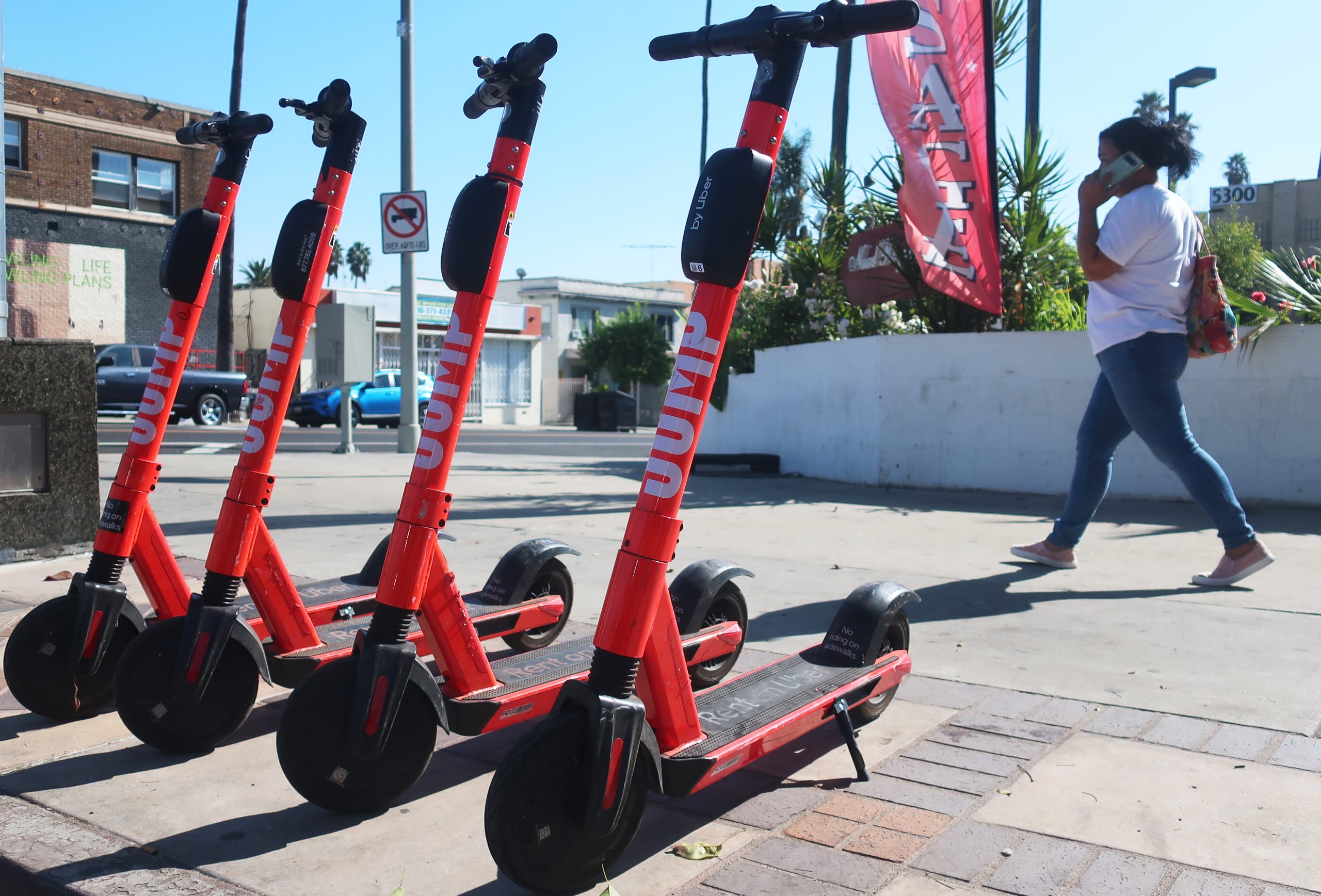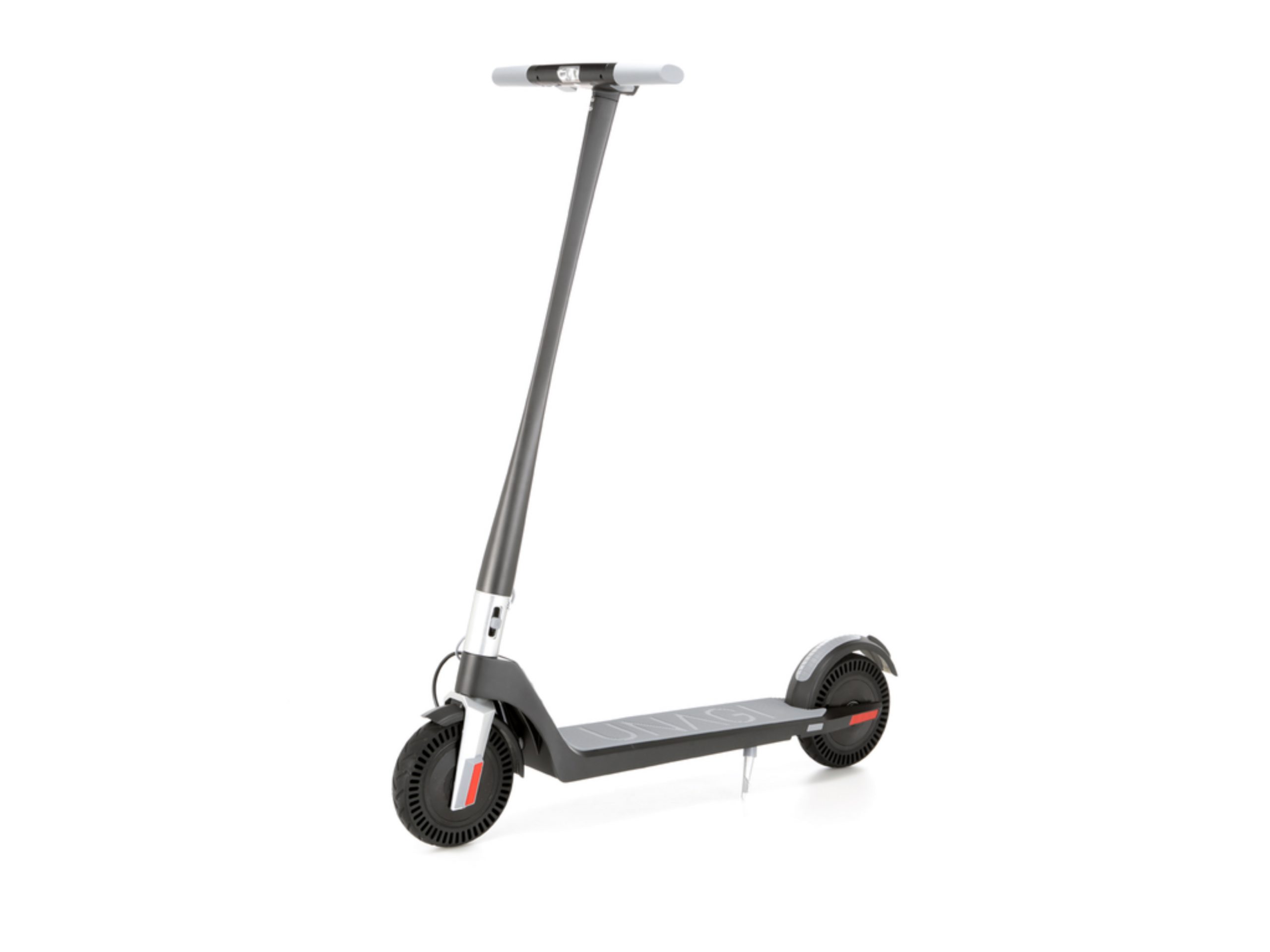Best electric scooters: a buying guide

An electric scooter is the best option if you're looking for a way to make short journeys quicker than walking, but aren't sure about commuting by bike.
Scooters are typically associated with child's play, but they are also used by adults as a means of getting about.
As of June 17, 2020, e-scooters cannot be legally ridden on the road, pavement or cycle path in the UK - they're only legal to use on private property. However, trials are due to commence from the end of June with the Department for Transport exploring their legalisation and the rules that will be applied in line with this.
Currently, some e-scooters can reach 30 miles per hour (mph) but AutoExpress says this could be reduced to 12.5mph under the pilot.
As the government looks to encourage people to use more sustainable methods of transport, and avoid public transport amid the Covid-19 crisis, it's possible that we'll see more scooter hire systems arise in cities.
- Best electric bikes
- Best cheap electric bikes: e-bikes under £1,000
- Best electric bikes for women
- Best electric folding bikes
Anatomy of an electric scooter

Standard, non-motortised scooters are called 'kick' scooters, because the user places one foot on the deck and kicks themselves along with the other foot.
There are some versions which offer a seated position, but these are the minority.
Control takes place at the handlebars, mounted in the centre by the 'stem'. Ideally, you want the stem to be adjustable to allow you to place the handlebars at an optimum height. A foldable stem will also make storage much easier.
The brakes levers are mounted on the handlebar. Electric scooters can use disc, drum, foot, regenerative or electric brakes. Disc brakes are fast and responsive, but do need a little maintenance. Drum brakes are inside the wheel hub, with pads that push outwards against the braking surface.
Foot brakes are the very simplest of options - they're operated by the rider pushing a mounted mudguard against the wheel.
Regenerative and electronic brakes both work by either applying resistance to motor rotation. They don't require maintenace, but aren't as quick to stop.
Softening the ride
It's now becoming more common for electric scooters to include suspension. As per a mountain bike (and some road bikes), this helps to prevent uneven roads from impacting the user.
Scooters with suspension will either use spring, hydraulic or air piston or rubber suspension. The highest quality options will combine spring and piston suspension - this is called coil-over-hydraulic or coil-over-air suspension.
The tyres mounted to the wheels also play an important role in how much road imperfection affects the rider. As on a bicycle, wider tyres spread the contact patch and provide more cushion.
Scooters can come with pneumatic tyres, like those on a bicycle, or solid airless tyres. The latter will throw up a much more comfortable ride quality but of course will carry the risk of puncturing.
What powers an electric scooter?
The battery on an electric scooter is typically mounted under or within the deck (where the person stands), and a 250 watt hour (Wh) battery is the norm, though much larger batteries are available and will offer a greater range.
The range of the battery varies depending upon how hard it has to work - it will drain more quickly for a 90kg user moving uphill than for a 60kg rider on the flat. Most can be charged via the mains.
The motor of an electric scooter is built into one or both of the wheels. The motor can be Brushless DC (BLDC) or Brushed. Brushed motors have mechanical brushes that drag along the inside of the motor to power different coil faces, whilst a BLDC motor does this digitally. More modern designs favor the BLDC approach for its improved power-to-weight and durability.
The average model has a 250-watt motor, but more powerful options can have motors over 1,000 watts. A more powerful motor will accelerate more quickly and can carry more weight, going faster uphill.
Manufacturers can quote peak and/or sustained power. A high peak power will mean the scooter can get off to a quick start - but sustained power refers to how it will perform over a longer duration, and unless you're racing off the lights, is more useful.
E-scooters can travel up to 30mph, though around 15mph is more typical.
Electric scooter options
Looking to buy? Here's a look at some of the options on the market. With each bike is a ‘Best Deal’ link. If you click on this then we may receive a small amount of money from the retailer when you purchase the item. This doesn’t affect the amount you pay.

Razor Power A2 electric scooter
The Razor Power A2 electric scooter is presented more commonly as a 'toy' than a commuting option, and that's represented in the max rider weight of 65kg. However coming in at just 6.46kg itself it's an inexpensive and easy to carry option for youngsters and some lower weight adults looking to make short trips.
This model uses a 22 volt lithium-ion powered hub motor and lasts a claimed 40 minutes at 10 mph. The wheels are both airless and braking is operated by a rear-fender. The handlebars are adjustable and foldable.

Ninebot KickScooter E22E Powered by Segway
This sleek scooter weighs in at 13.5kg and boasts a 300w motor with a 18Wh battery to provide a 13-mile range at 12.5mph.
The tyres are solid, and the braking system is regenerative with fender kick brakes also built in front and rear. A full LED display is included and this scooter is Bluetooth compatible to make updates easy.

Razor E300 Electric scooter
A E300 is a much more burly creation, weighing in at 23.67kg - but that means it can support riders up to 100kg so is much more suited to an adult market. The deck measures 66.6x20.4cm and the handlebars come with a hand operated rear brake with nine-inch pneumatic tyres.
This model comes with a 250-watt battery that offers a claimed 40 minutes continuous use at up to 15mph. Each scooter comes with two 12-volt rechargeable batteries.

Unagi Model One E450
This is a lightweight scooter with a limited range of 15 miles, maxing out at 15mph. It's not one for long or quick journeys, but it does weigh in at just 11kg. A lot of the low weight comes down to the use of a magnesium alloy handlebar and comes with a built in 47 lumen front light and rear red LED.
This model uses a 450-watt motor, and solid rubber tyres and electronic brakes.

Kaabo Wolf Warrior II
The Kaabo Wolf Warrior II is something completely different - and that's represented in the RRP at £2599. It packs a lot more punch than most people will ever need - but it's an example of what is available on the market if you're looking to go heavy duty!
Designed for off-road use as well as road use, it packs a punch with two 1200-watt brushless motors able to scale 30 per cent inclines or cover a claimed 70 miles with a max speed of 50mph. You can opt for road or off-road tyres, the rubber is 11-inch and pneumatic. The suspension is hydraulic at the front with springs at the rear.
The latest race content, interviews, features, reviews and expert buying guides, direct to your inbox!
Founded in 1891, Cycling Weekly and its team of expert journalists brings cyclists in-depth reviews, extensive coverage of both professional and domestic racing, as well as fitness advice and 'brew a cuppa and put your feet up' features. Cycling Weekly serves its audience across a range of platforms, from good old-fashioned print to online journalism, and video.